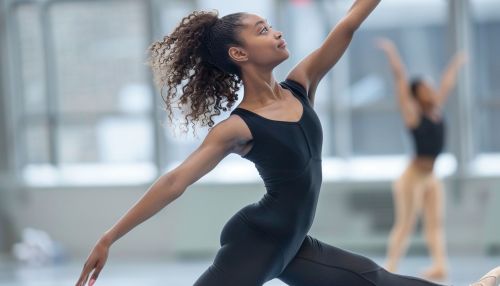Ballet Terminology
Introduction
Ballet is a highly technical form of dance that originated during the Italian Renaissance in the 15th century and later developed into a concert dance form in France and Russia. It has been globally influential and has defined the foundational techniques used in many other dance genres and cultures. Ballet terminology is a standardized system of terms that describe the movements, positions, and techniques used in ballet. These terms are primarily derived from the French language, as France was where ballet was first codified. This article will delve into the various terms used in ballet, their meanings, and their applications in the dance form.
Basic Positions
In ballet, there are five basic positions of the feet: first, second, third, fourth, and fifth. These positions form the basis of all ballet movements and are essential for a dancer's training.


First Position
In the first position, the heels are together with the toes turned out to the sides. The legs are straight and close together, and the feet form a straight line.
Second Position
The second position is similar to the first, but the feet are hip-width apart. The toes are still turned out to the sides, and the legs remain straight.
Third Position
In the third position, one foot is placed in front of the other, with the heel of the front foot touching the arch of the back foot. This position is less commonly used in modern ballet.
Fourth Position
The fourth position involves one foot being placed approximately twelve inches in front of the other, with both feet turned out. The distance between the feet can vary based on the specific technique being used.
Fifth Position
In the fifth position, the heel of the front foot is placed against the toe of the back foot, and vice versa. This position requires a high degree of flexibility and turnout.
Ballet Movements
Ballet movements, or steps, are the building blocks of all ballet choreography. They range from simple steps performed at the barre during warm-ups to complex jumps and turns performed in the center of the dance floor or on stage.
Plie
A plié is a movement in which a dancer bends the knees while keeping the torso upright. There are two types of pliés: a demi-plié (half-bending) and a grand plié (full bending).
Tendu
A tendu is a movement in which a dancer stretches the working foot along the floor until only the toes are touching. The foot then returns to its original position.
Jete
A jeté is a jump in which a dancer leaps from one foot to land on the other. The term jeté can refer to a variety of jumps, and the specific type of jeté is usually indicated by additional terms.
Pirouette
A pirouette is a turn on one leg, with the other leg in retiré (a position where the working leg is bent inwards and held at the knee of the supporting leg). Pirouettes can be performed en dehors (outwards) or en dedans (inwards).
Ballet Techniques
Ballet techniques refer to the method of training that dancers undergo to learn and perfect their skills. The most widely used methods are the French, Russian, Italian, and American methods.
French School
The French School, also known as the Paris Opera Ballet School, is the oldest of the ballet methods and is known for its elegance and softness. It emphasizes quick footwork, fluid movements, and graceful port de bras (movement of the arms).
Russian Method
The Russian method, also known as the Vaganova method, is named after Agrippina Vaganova who developed this method based on her own experiences as a dancer and teacher. It is known for its expressive movements, deep pliés, high jumps, and extreme flexibility.
Italian Method
The Italian method, also known as the Cecchetti method, is named after Enrico Cecchetti who developed a rigorous training program that focuses on strength, balance, and precision. It is characterized by its strict adherence to the laws of anatomy.
American Method
The American method, also known as the Balanchine method, was developed by George Balanchine for the New York City Ballet. It is known for its speed, athleticism, and energy. It emphasizes line over form and incorporates elements of jazz and modern dance.
See Also
Categories
Note: This article is a general overview and does not cover all aspects of ballet terminology. For a more comprehensive understanding, please refer to specialized textbooks or consult with professional ballet instructors.
